Burnt Ends-style BBQ in Bali, Ce La Vi in Miami: Singaporean brands you might find overseas soon
Sign up now: Get ST's newsletters delivered to your inbox
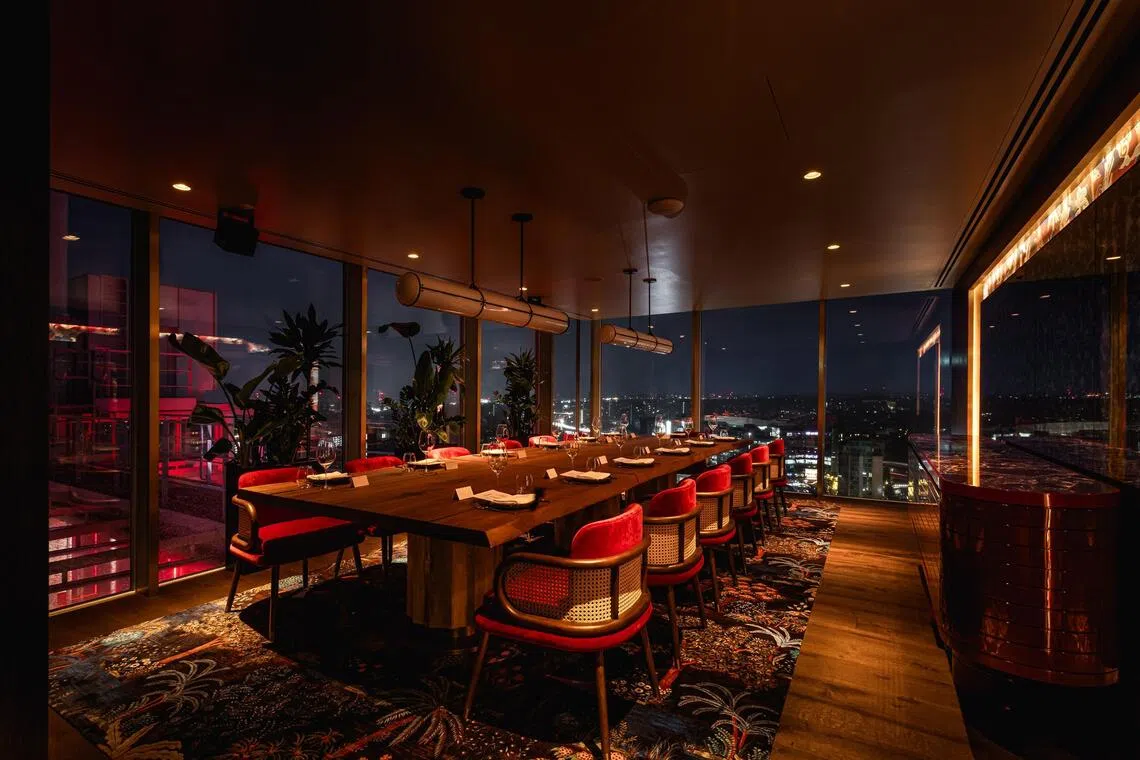
Ce La Vi opened its London outlet (above) in September and is eyeing future openings in places like Miami.
PHOTO: CE LA VI
Follow topic:
SINGAPORE – Cannot get a reservation at Burnt Ends in Dempsey? You might have better luck in Bali.
Chef-owner Dave Pynt is hauling his wildly popular style of cooking to the Indonesian island, where it will run as The Ledge by Dave Pynt, the culinary crown jewel of upcoming hotel Waldorf Astoria Bali.
When it opens in 2027, expect Burnt Ends’ signature brand of modern barbecue, laid-back but professional service and technical finesse.
Pynt has not worked out the menu yet, but foresees there will be “a little bit of crossover” with the Singapore slate of offerings.
The four-tonne brick kilns that underpin operations in the one-Michelin-starred Dempsey restaurant – making possible fiery favourites like its Blackmores’ striploin ($88++ for 100g) – will be reconstructed in Nusa Dua.
Pynt is even toying with the idea of adding a third cavity, which could mean more variety on the menu and, potentially, a more efficiently run private dining experience.
Though the design process has only just started, he already knows what he does not want: “A semi-closed kitchen, a basic sound system, square tables and chairs, no built-in design feature that challenges the way people use the space.”
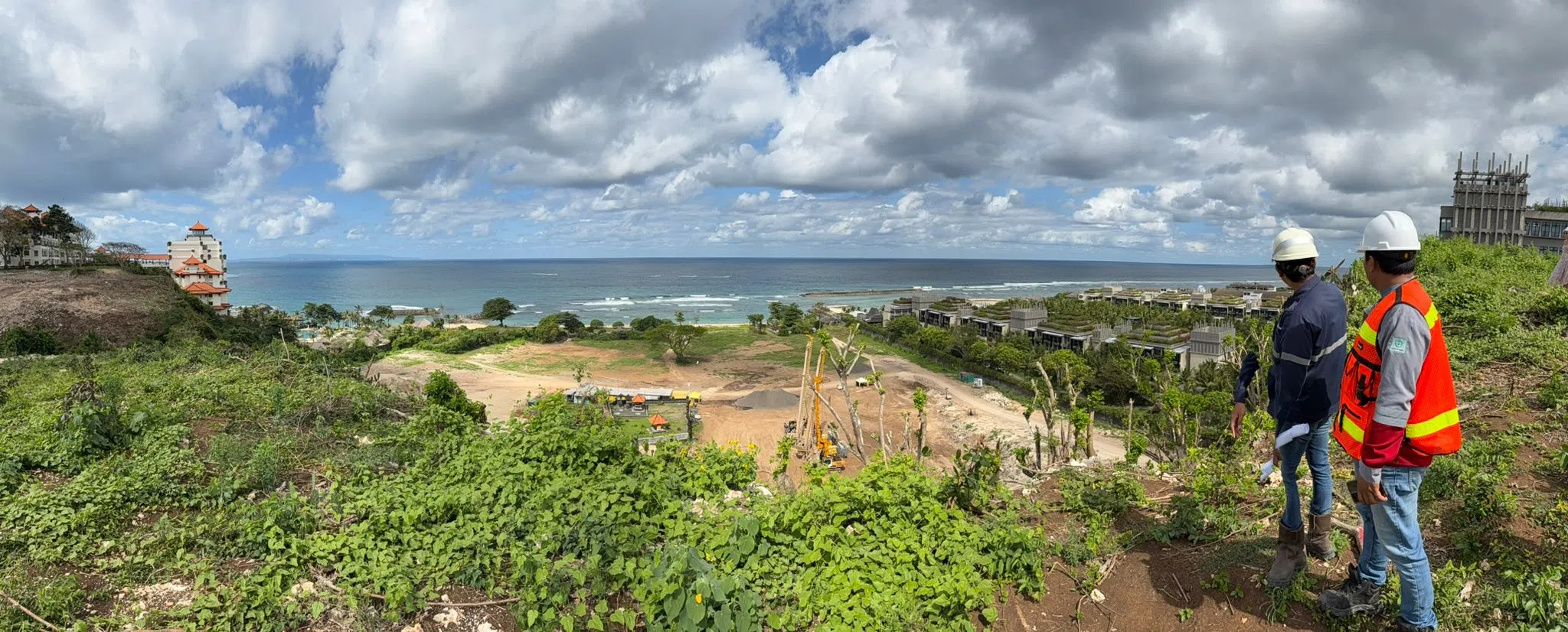
The view from Dave Pynt’s upcoming restaurant in Bali.
PHOTO: DAVE PYNT
The plan, then, is to push the boundaries of restaurant design and take risks. Pynt wants to work with Indonesian craftsmen and locally sourced materials – volcanic glass, for instance, is on the cards.
This will be his second overseas restaurant, following The Ledge by Dave Pynt in the Waldorf Astoria Maldives Ithaafushi, but the 41-year-old Australian chef, who has been based in Singapore for 13 years, has no designs on world domination.
“We just like to look at projects that make sense to us and are somewhere we want to be. There’s no real ambition to conquer the world or tick boxes. It’s more like if the project is great, the partners are great, the location is great, then let’s do it. If not, you know what? We don’t need it. We’re happy with what we’ve got here in Singapore,” he says.
A life buoy in rocky seas
Pynt is one of many Singapore-based chefs casting their net far and wide. Others have turned to Enterprise Singapore (EnterpriseSG) for aid. Since 2022, it has supported more than 700 overseas market exploration projects by defraying costs and providing network support.
While Pynt might be doing it for the love of the game, others are fuelled by different reasons, necessity increasingly chief among them in the current local climate.
Much has been made of the difficulties faced by restaurants and eateries in a year of rising prices and indifferent diners. The oft-regurgitated statistic is the record number of closures in 2024 – a nearly 20-year high of 3,047.
Caught up in 2025’s cull are former mainstays like casual chain Prive, once-buzzy international imports such as Burger & Lobster, Michelin-starred establishments Restaurant Euphoria and Alma by Juan Amador, as well as heritage brand Ka-Soh.
And while more businesses are opening, it is unclear whether local diners have the appetite to sustain them.
According to the Singapore Dining Out Report 2025 released by international market research firm YouGov in October, one in three Singaporeans say they are dining out less often than they did a year ago, with most attributing this change to rising costs.
Under these circumstances, it is hard not to be compelled by the promise of foreign shores, with their hordes of willing – or so these chefs hope – diners and lower overheads.
For example, such costs are 50 per cent lower in Malaysia, estimates Mr Keith Koh, founder of local gastropub Lad & Dad, who just set up a Kuala Lumpur outpost in May.
The 35-year-old is still working on breaking even in Malaysia, but at least he is “not losing sleep” over fixed overheads.

Gastropub Lad & Dad’s Mr Keith Koh with his father at their Malaysian outlet, which opened in May.
PHOTO: KEITH KOH
“In Singapore, if you have three bad months, you start to worry quite a bit. But in Malaysia, you stand a chance. When you have lower overheads, you’re also able to scale. You don’t need very deep pockets or a long runway,” he says.
The move has reinvigorated his sense of purpose. “We’re not going to Malaysia because we’re looking for a way out of Singapore. We just want to keep our options open while the market here remains quite slow. We don’t want to rest on our laurels, but create opportunities for the team,” he says.
He initially planned to expand his portfolio in Singapore, but held off due to sluggish customer spending. And while his food is priced more modestly in Malaysia – a plate of fish and chips retails for $19.90+ in Singapore compared with RM51.90 (S$16) in Kuala Lumpur – the lower takings are offset by a larger pool of enthusiastic diners.
“Part of the reason is because they have a stronger culture of fried food in Malaysia, with lots of deep-fried staples,” he muses.
In contrast, many Singaporeans are gravitating towards healthy eating, trying out vegan or keto diets. And because the market is so small, even a fringe trend can rob him of a significant chunk of his customer base.
He is looking to open five to 10 outlets in Kuala Lumpur alone within the next few years, but will stay away from Johor Bahru for now to avoid cannibalising his Singapore restaurant. But he adds: “I think it’s only a matter of time.”
How far to go?
Cafe chain Sarnies co-founders Benjamin Lee, 48, and Eric Chan, 34, have likewise found that the market elsewhere in South-east Asia is more forgiving.
In Mr Lee’s view, the team can afford to “dream bigger” in Bangkok. It currently runs 11 cafes and restaurants in the Thai capital, as well as the original Sarnies in Telok Ayer, its only Singapore outlet.
“For Singapore, we tend to take a more measured approach on things, but in Bangkok, we are happy to push the boundaries more,” he says, describing Sarnies’ operations in the Thai capital as more than a cafe.
He sees it more as a multi-concept behemoth that encompasses bars, restaurants, wholesale supplies and even a creative agency and agricultural projects in Northern Thailand.
However, Mr Chan is reluctant to conclude that it is easier to grow a business in Bangkok. “We’ve spent a long time learning the culture, navigating nuances and building the right relationships. It was far from easy, especially as non-Thais expanding without a local partner, and even more so during the Covid-19 pandemic, when we grew rapidly.”
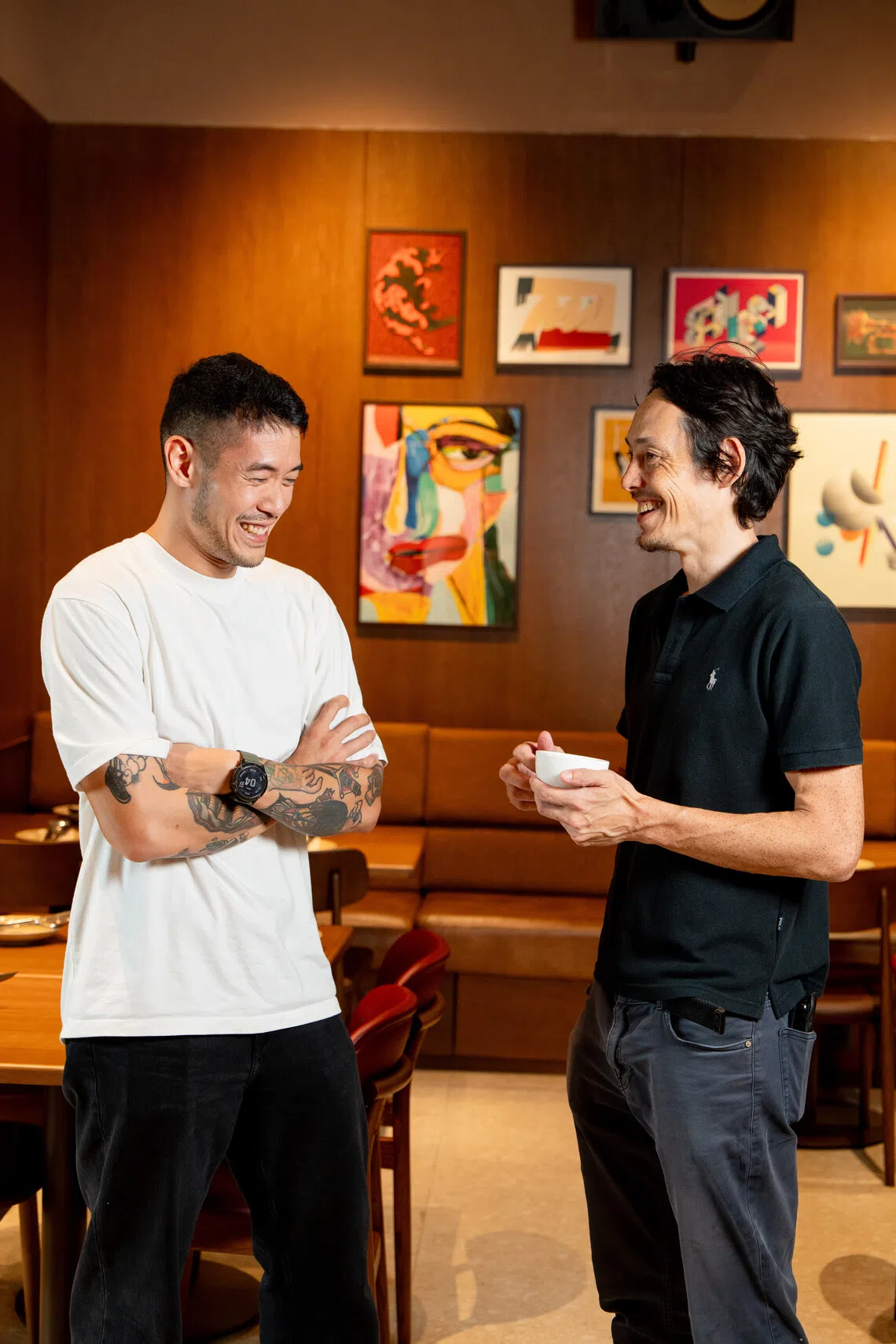
Sarnies co-founders Benjamin Lee (right) and Eric Chan run 11 cafes and restaurants in Bangkok.
PHOTO: SARNIES
Plus, they had to familiarise themselves with key cultural nuances. Managing Thai staff, for instance, requires a gentler, relational approach, unlike a faster and more direct style in Singapore. Additionally, Thai diners value experimental offerings and spaces with more character, so a stripped-back, classic cafe like the original Sarnies in Singapore may not resonate as strongly there.
Mr Chan says: “That said, if you can get it right, it’s incredibly rewarding. Bangkok is a city with significant international exposure, and a strong brand presence there can be hugely beneficial.”
Like the duo, many local entrepreneurs are setting their sights on South-east Asia, mainly due to its proximity and growing consumer base, according to Mr Jason Lim, director of Food Services & Heartland Enterprises at EnterpriseSG.
In 2025, the South-east Asian food services market has been valued at US$223.8 billion (S$291.4 billion), and is expected to reach US$416.3 billion by 2030.
Mr Lim says: “The region’s proximity also provides significant operational advantages whereby companies can maintain closer relationships with overseas partners, exercise better operational oversight and respond more quickly to market changes.”
He adds that Singapore businesses are more aware of the cultural nuances of their neighbours, and that such familiarity can help them adapt their offerings more effectively to local tastes.
Not a silver bullet
However, such fluency is not guaranteed, and the failure to accurately read the room can prove fatal.
Mr Frank Lau, 45, founder and chief executive of Gratify Group, learnt the hard way when he tried bringing his fast-casual Korean food brand, Seoul Yummy, to Indonesia in 2018.
Feeling optimistic, he committed himself to opening three outlets at one go, at Jakarta’s Lippo Mall Kemang, Pondok Indah Mall and Puri Indah Mall.
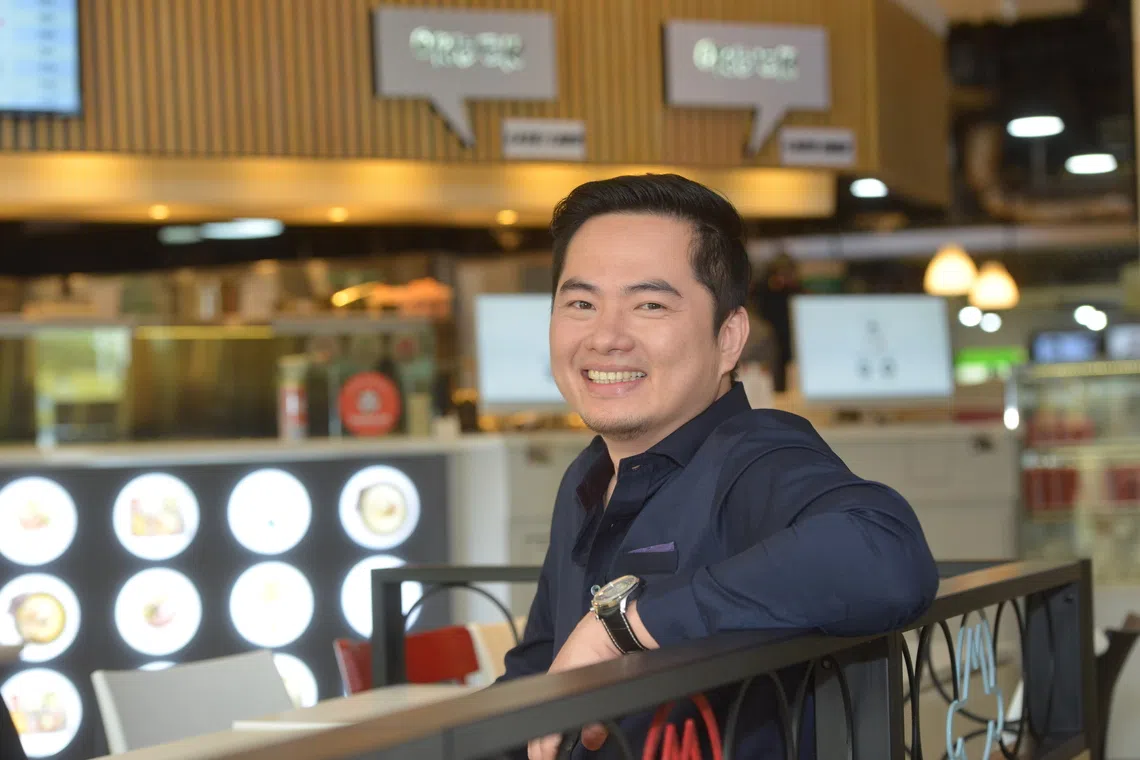
Mr Frank Lau tried to bring Seoul Yummy to Indonesia in 2018.
PHOTO: GRATIFY GROUP
He now realises he may have been a tad too ambitious. “I wanted to achieve economies of scale as soon as possible without understanding what consumers really wanted. I didn’t understand that my first location was not suitable because it was in a suburban area,” he reflects.
The lower spending power in that neighbourhood forced him to drop prices and that dragged his branding down. It lowered the bar for his subsequent outlets, which were located in busier malls. All three outlets shut during the Covid-19 pandemic in 2020.
But securing the right spot is just the first step. Even the best-placed restaurant could crumble under assault from external headwinds. One such example is home-grown snack chain Mr Bean, which has been buffeted time and again by circumstance on its journey around Asia.
Its Japan franchise, which began in Shibuya in 2010, was closed in 2019 when the site was redeveloped for the Tokyo Olympics. Then the pandemic hit, causing the chain to shelve its relocation plans and forcing it to close 12 outlets in Vietnam.
Today, Mr Bean, which runs more than 70 outlets in Singapore, has scaled down to operating just three direct-owned stores in Malaysia, a portfolio that its founder and chief executive Loh Jwee Poh, 65, calls “a more hands-on approach to overseas growth”.
He adds: “Despite these setbacks, each experience helped refine the brand’s expansion strategy focusing on sustainable, locally rooted operations rather than a rapid roll-out.”
Making it, however, can be incredibly rewarding, both for the individual business and the Singapore brand as a whole.
EnterpriseSG’s Mr Lim says: “Having strong Singapore brands fly our flag overseas further reinforces Singapore’s position as a vibrant hub for food and culture on the global stage.”

A Sarnies outlet at One Bangkok.
PHOTO: SARNIES
The key to success is teaming up with a strong local partner which can advise on operations, ground sentiments and supply chain arrangements, according to Mr Leonard Lam, 53, managing director in Asia-Pacific for food service equipment supplier Welbilt.
“You need to get your supply chain and quality right. Many times, businesses think they’ve succeeded overseas when they draw the long queues, but if they don’t have the right local partners, their quality will start to suffer and business will peter out. Customers can be very unforgiving,” he says.
Mr Lam also advises businesses not to rush into expanding, but to first get the basics right and solidify their foothold in a new market.
So, Gratify Group’s Mr Lau is hoping that the second time will prove the charm and is proceeding with more caution. He is gearing up to move his new brand, Kimchi Mama, to Malaysia by early 2027, and will start with just one location.
“Based on the experience (in Indonesia), I realised that it’s good to start with one outlet to do a proof of concept before expanding further. We want to make sure the first outlet can give us that confidence, or at least be profitable, before we start to grow the business in Malaysia.”
Here are four other Singapore brands to catch overseas soon.
The Masses in Vietnam

The Masses chef Dylan Ong wants to take his restaurant to Vietnam in 2026.
ST PHOTO: GAVIN FOO
The Masses, a Franco-Asian restaurant in Capitol Singapore, prides itself on serving “honest, good food that Monsieur, Mademoiselle and Ah Ma will love”. The next test, then, for chef-owner Dylan Ong is whether Vietnam’s moi nguoi (people) will love it too.
He plans to export the brand to Ho Chi Minh City in 2026, with high hopes that the country, whose gastronomy has been so influenced by its colonial past, will warm to his version of French fare.
While his objective remains unchanged – to reinterpret French classics through an Asian lens at affordable prices – the menu will be tweaked to pay tribute to The Masses’ new host, incorporating garnishes such as sorrel leaf and wild herbs grown locally.
He is also trying to find a way to marry Vietnamese marination techniques with his style of cooking.
“We want to embrace their culture and ingredients. They have great produce that’s within arm’s reach of the city,” says the 38-year-old.
He expects that his signature dishes like C&C&C&C&C&C pasta (from $19.90++), made with crabmeat, caviar, confit lemon, chorizo, capellini, clams and lobster bisque and served cold, will prove popular, bearing similar notes to seafood-accented Vietnamese dishes like banh canh cua, a noodle soup with crab and shrimp. Starters should cost in the ballpark of $11 to $13, and mains at $15 to $18.
Chef Ong also runs Choon Hoy Parlour, a Singaporean restaurant located next to The Masses in Capitol Singapore, but this concept is unlikely to be moving abroad any time soon. He is not entirely convinced that it will work outside Singapore.
“Our flavour profile might be too intense for other cultures. And to be honest, you don’t really see Singapore cuisine around the world. It’s not mass market or globalised like Korean food is, maybe because it doesn’t suit everyone’s palate,” he says.
Great Nanyang in the Philippines

Chicken berempah leg from Great Nanyang.
PHOTO: GREAT NANYANG
Singaporean chain Great Nanyang is in the process of moving to the Philippines, where it will introduce its traditional South-east Asian fare – think dishes like chicken berempah leg ($8.90++) and moonlight hor fun ($8.90++).
“South-east Asia is a natural choice because all the countries in this region are part of the Nanyang heritage,” says Mr Goh Yee Jian, 30, operations manager at Great Nanyang.
Nanyang is the Chinese term for “Southern Ocean”, and is often conflated with the current region of South-east Asia.
“We see the Philippines not only as a strong market, but also as a cultural partner in preserving and sharing the richness of Nanyang heritage. Ultimately, our vision is to use South-east Asia as the foundation to bring Nanyang food and culture to the world stage.”
While he declines to specify the exact timeline, the company has selected Manila as the site of its first overseas restaurant for its high population density and varied footfall.
Great Nanyang currently has four outlets here in Craig Road, 111 Somerset, Science Park Drive and Changi City Point.
To better cater to local tastes, Mr Goh says his team will add traditional Filipino dishes to the menu – singling out local fried items as “excellent and worth exploring further for research and development” – while modifying certain items to suit the local palate.
He is confident that Filipinos will share Singaporeans’ love for dishes like chicken cutlet. Other local favourites such as assam fish, mee siam and nasi lemak might require further introduction, however.
“With localised menu items, we are confident that customers will visit us, and through repeated exposure, they will develop a taste for Singaporean cuisine. We also plan to engage customers through storytelling and menu descriptions to highlight the heritage behind each dish,” he says.
EN Group in Vietnam
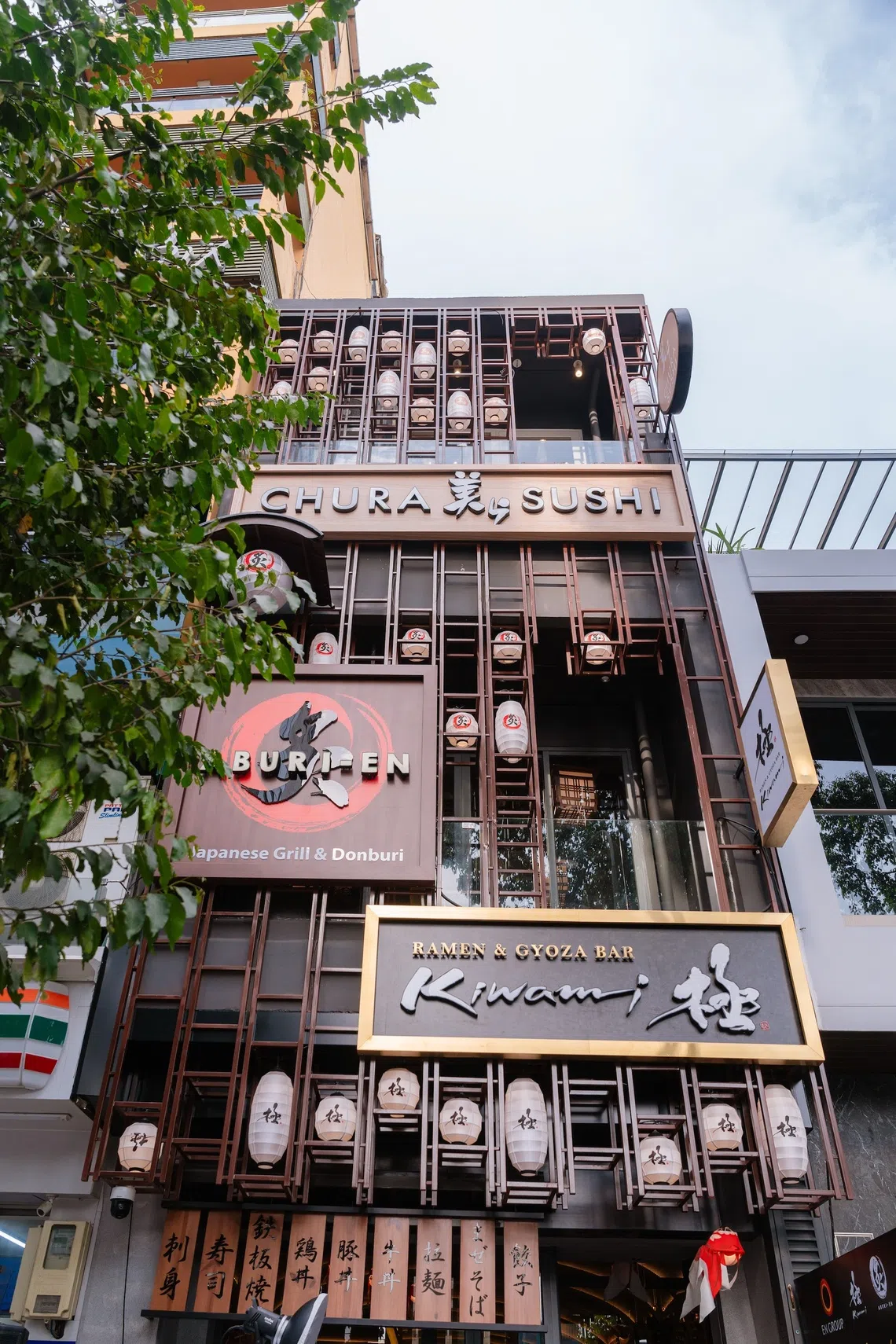
Singapore’s EN Group opened three restaurants in Ho Chi Minh City in March.
PHOTO: EN GROUP
Another Singaporean brand has landed in Vietnam, riding the recent wave of demand for Japanese cuisine. The number of Japanese restaurants in Vietnam more than tripled from 770 in 2015 to some 2,500 in 2020, according to comments made in 2022 by Mr Matsumoto Nobuyuki, chief representative of the office of the Japan External Trade Organization (Jetro).
But Mr Raymond Ng, 59, managing director of EN Group, which runs 49 eateries here, sees untapped potential hidden within the crowd.
“Ho Chi Minh City, in particular, lacks Japanese speciality restaurants. Its Japanese restaurants are either full-menu Japanese food or izakayas,” he says.
The group has swept into the country’s most populous city with three brands so far: Kiwami Ramen & Gyoza Bar, Aburi-EN and Chura Sushi Bar, all of which opened in March 2025.
The next restaurant, Ka-EN Japanese Grill & Sushi Bar, arrives in the Thao Dien area in December, while its next four outlets – Aburi-EN, Kiwami Ramen & Gyoza Bar, Tonkatsu ENbiton and a teppanyaki concept – will be up and running in 2026.
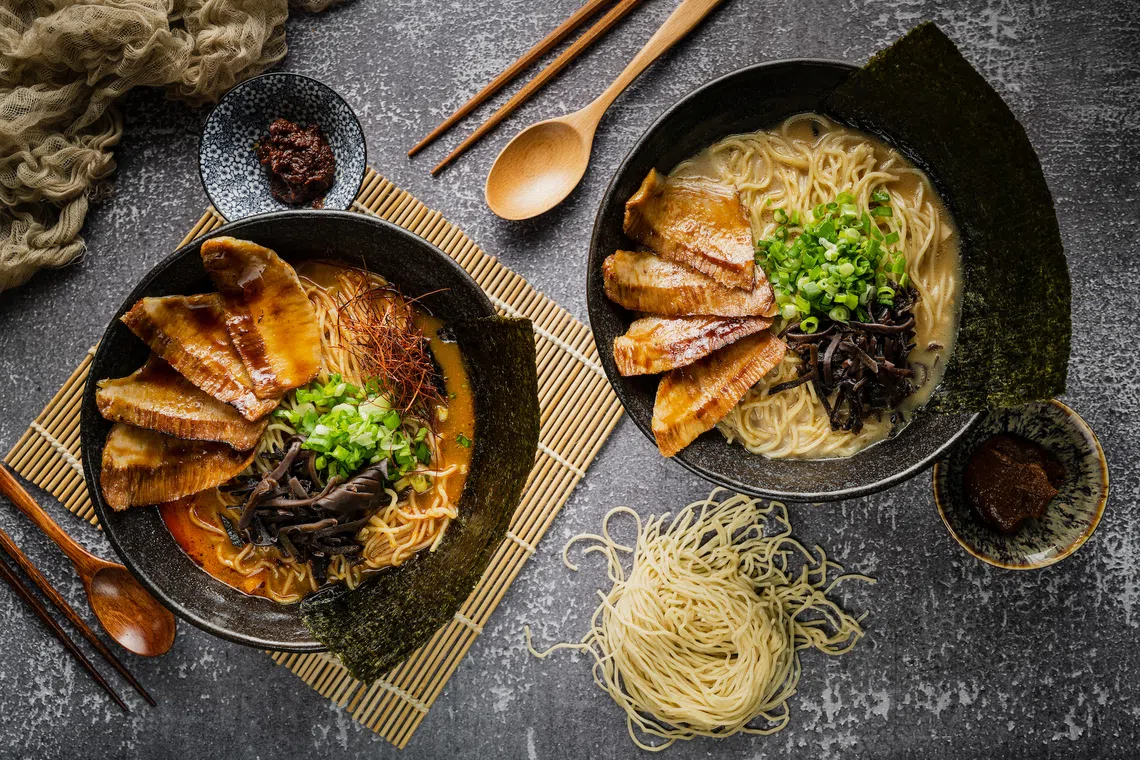
Mr Raymond Ng, managing director of EN Group, thinks that ramen aligns with the Vietnamese love for noodles.
PHOTO: EN GROUP
He thinks that these flavours gel well with the local palate. Ramen, for example, aligns with the Vietnamese love for noodles, while Aburi-EN’s flame-seared meats are not too different from com tam – broken rice served with grilled pork.
One difference that has emerged is Vietnamese diners’ preference for lighter meals with smaller portions. So, retaining 90 per cent of its menus from Singapore – where preferences skew heartier and more savoury – was a no-go.
“To adapt, we introduced smaller-sized donburi and ramen portions, while maintaining our signature Japanese quality and consistency,” he says.
Ce La Vi in London, Miami and beyond
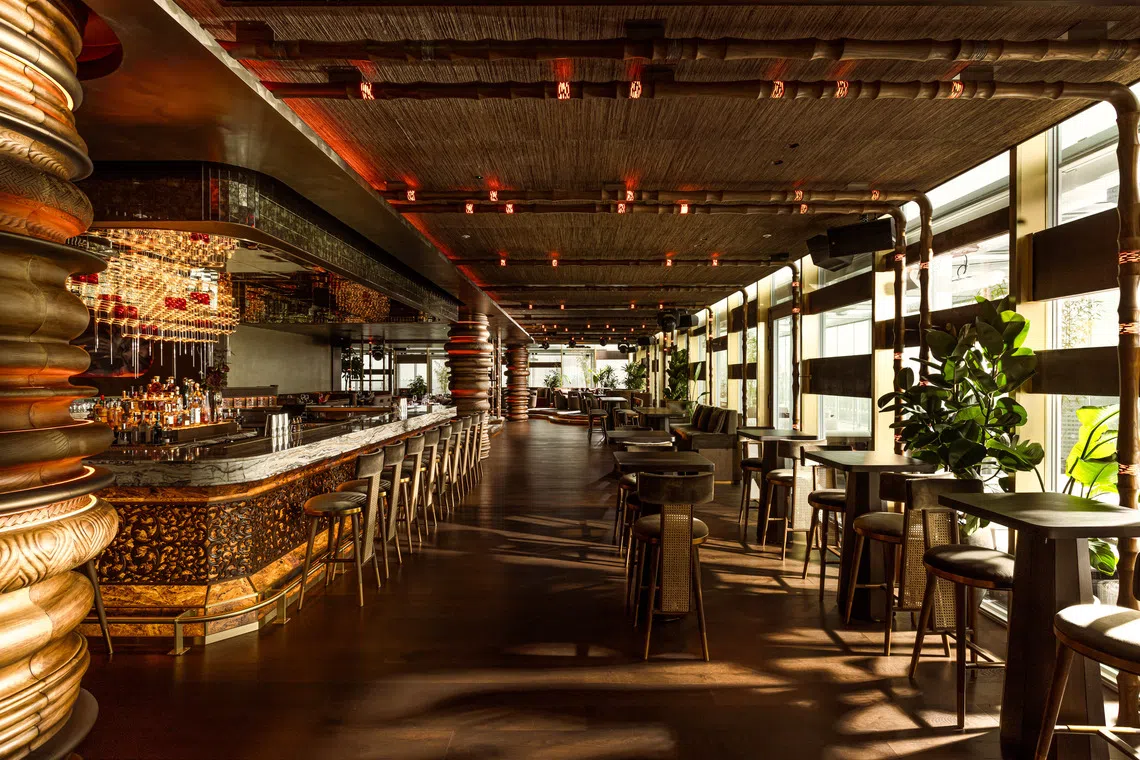
Both Ce La Vi’s London and Singapore outlets feature accented bamboo pillars inspired by South-east Asian art.
PHOTO: CE LA VI
In September, rooftop restaurant and bar Ce La Vi opened its fifth outlet on the top of Paddington Square in London. As its first foray into Europe, this marked a milestone for the home-grown brand whose founders, in those uncertain early days, assumed it would “remain a South-east Asian brand at best”.
“That wasn’t from a lack of ambition, but simply a reflection of the industry reality at the time,” says Mr Harry Apostolides, 57, the group’s US-born co-founder and chief executive, who has lived in Singapore since 2017. .
“International landlords tended to favour established US or European operators with a longer track record. Understandably, there was a degree of scepticism around whether a Singapore brand could deliver consistent standards in highly competitive global markets.”
Over the years, the brand has proved itself wrong, dropping anchor first in Taipei and Tokyo in 2019, before scaling up to Dubai in 2020, where it discovered that it could indeed hold its own in one of the most competitive global markets.
Miami, Belgrade, Abu Dhabi and Mumbai are next on its list, all scheduled to open in 2026.
While each location differs slightly from the last, Mr Apostolides keeps a common thread running throughout the brand’s various outlets. Every restaurant bears its signature red scheme, for instance, and will soon share a common scent of oriental wood and lemongrass.
“And our aim is to have a 60 per cent consistent menu, and then have around 40 per cent tailored to local nuances. Clearly, we need to adjust spice levels in a market like London, and the proteins that you use in other markets need to be adjusted depending on availability, seasonality and all of those sorts of things,” he says.
One dish he says transcends cultures is the miso Chilean seabass ($68++), favoured for its tender flesh and punchy flavour.
He sees Ce La Vi’s success as a point of national pride. “Some people say, ‘Oh Singapore, you know, it’s boring, it’s this, it’s that.’ We’re going out there saying Singapore is a dynamic, vibrant, energetic place with great food and drinks and hospitality that’s worthy of exporting abroad.”


